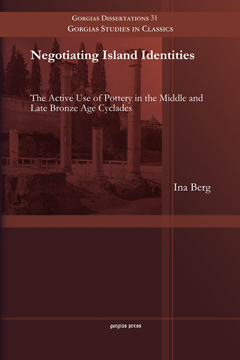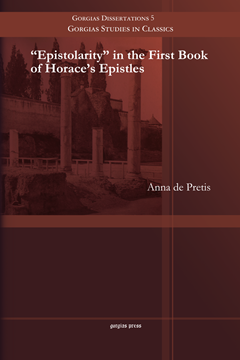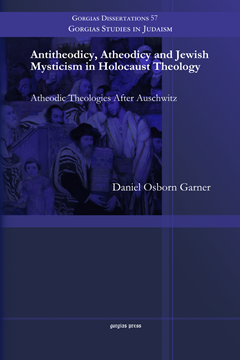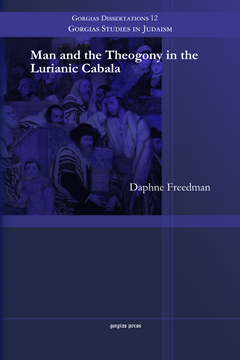The Hidden Pearl (vol. 3)
Vol. 3: At the Turn of the Third Millennium; The Syrian Orthodox Witness
ISBN: 1-931956-99-5-3
Despite tremendous challenges, Syriac culture and language has survived to the present day. However, massacres and forced migrations have forced Syriac communities to seek homes outside the Middle East, including Germany, the Netherlands, Sweden, America, and Australia. This volume looks at the changing face of Syriac culture in the new millennium and in particular the measures that are being taken to successfully adapt to its new environments. Includes color photographs.
$50.00 (USD)
Negotiating Island Identities
The Active Use of Pottery in the Middle and Late Bronze Age Cyclades
By Ina Berg
Series: Gorgias Studies in Classics 31
ISBN: 978-1-4632-0392-4
Negotiating Island Identities explores the history of interaction between Crete and the Cycladic islands from the late Middle to Late Bronze II periods when Minoan influence was at its peak. Based on a thorough investigation of pottery assemblages from key sites, the book advocates a rethink of established acculturation scenarios (such as “Minoanisation”) in relation to the Cycladic islands. Openness or closure towards outside influences was not predetermined by cultural, geographical or ecological variables but was socially constructed. Island communities could consciously fashion their worlds and make choices about the nature and degree of interaction with their neighbours.
$90.00 (USD)
"Epistolarity" in the First Book of Horace's Epistles
Series: Gorgias Studies in Classics 5
ISBN: 978-1-4632-0393-1
De Pretis’s book focuses on the epistolary features of Horace’s First Book of Epistles, reading them from points of view related to the epistolary form: the weight of the addressee; the dialogue between literary genres; the poet's self-representation; temporality; and the power of the author. These issues also pertain to literature as such, since all literature can be regarded, to a certain degree, as "epistolary." But the extent and consistency with which the Epistles explore epistolary aspects, can only be explained in terms of their generic affiliation.
$90.00 (USD)
Antitheodicy, Atheodicy and Jewish Mysticism in Holocaust Theology
Atheodic Theologies After Auschwitz
Series: Gorgias Studies in Judaism 57
ISBN: 978-1-4632-0394-8
The Holocaust has provoked many different Jewish theological responses, yet upon closer inspection interesting commonalities can be observed between even seemingly antithetical thinkers. One of these common trends within Holocaust theology has been the rejection and replacement of traditional theodicies which explain and justify suffering, with responses centred on ideas of recovery, consolation and divine mystery. Another widespread, though largely unrecognized trend is use of Jewish mystical themes by Holocaust theologians. This study shows how the presence of Jewish mysticism can be explained, at least in part, by this post-Holocaust collapse of theodicy.
$93.00 (USD) $55.80 (USD)
Man and the Theogony in the Lurianic Cabala
Series: Gorgias Studies in Judaism 12
ISBN: 978-1-4632-0395-5
Lurianic mythology represents an intensely personal view, in which earlier cabalistic symbolism is used to express new and original ideas. The lurianic corpus can be seen as a metaphor for a relation between man and the deity which is not yet fulfilled. The cabalistic myths of his sources express the reality of the relations of being in the lurianic corpus. The lurianic system seeks to reformulate the relation of man and god, concentrating on the way that the being of the deity is revealed in man.
$83.00 (USD)
Midrash and Legend
Historical Anecdotes in the Tannaitic Midrashim
Series: Gorgias Studies in Judaism 9
ISBN: 978-1-4632-0396-2
This study applies form criticism to the stories of the earliest rabbinic midrashim. The results shed light on the literary personalities of the individual midrash collections and the relationships of transmission in the tradition. These stories are of particular interest from an inter-religious and comparative literary point of view because New Testament studies have often referred to certain narratives in the gospels as "midrashic." The author sets forth, in positive terms, an understanding of what functions historical anecdotes serve in the tannaitic midrashim, along with a catalogue of the rhetorical conventions used to fulfill those functions.
$196.00 (USD)





